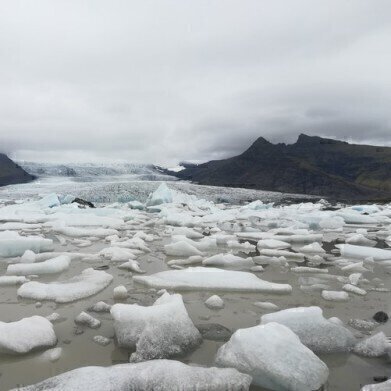GC-MS
Chromatography Tells Us More About an Explorer's Final Hours
Jan 13 2021
A tragic tale that unfolded over 100 years ago in the harsh climate of northeast Greenland has recently been resolved. Brønlundwas a participant in an expedition to Greenland in 1906-08. He died alone in a small cave of frostbite and hunger in 1907. One of his last acts was to write a diary entry which translates as:
“Died the 79- Fjord under the hardships of the return journey over the inland ice in November. I reach this place under a waning moon, and could not go on, because of frostbite in the feet and the darkness. The bodies of the others are in the middle of the fjord in front of glacier”.
On the page alongside the entry was a black smudge. What was the smudge? What could it reveal about Brønlund’s last moments? For years analysis couldn’t provide any answers. But in a paper published in the journal archaeometry, researchers from the University of Southern Denmark have finally identified the black smudge thanks to modern analytical techniques and technology including pyrolysis gas chromatography mass spectrometry. Recent advances in technology are discussed in the article, Hybrid Structures for Complex Analytical Instruments. So, what can chromatography reveal about an explorer’s final moments?
Charting the unknown
Northeast Greenland is still a hostile place. The expedition sailed to Greenland in August 1906 with the aim of mapping the region and carrying out scientific studies. Alfred Wegener – remembered as the father of continental drift theory - was part of the scientific team. Brønlund was part of a small sledge team that set off north to discover whether Peary Land was a peninsular or an island. If it were a peninsular it would remain part of the Danish Kingdom, if it were an island it would belong to the US.
The sledge team were hampered by the ice conditions and they tried to reach Independence Fjord. Summer ice and poor hunting conditions meant they were short of food, foot gear and were hundreds of miles from safety. Brønlund’s companions died – leaving him alone on the ice. He took shelter in a cave before writing his final diary entry. His body was found the following spring – his companions’ bodies are still somewhere in the icy wastes of northeast Greenland.
What’s in the black smudge?
New analysis of the black smudge on Brønlund’s diary reveals a mix of burnt rubber, various oils, petroleum, and faeces. In a press release from the university, Kaare Lund Rasmussen says, “This new knowledge gives a unique insight into Brønlund's last hours.” It is though that to keep warm, Brønlund tried to light a burner. He had a burner, petroleum and matches. But no metabolised alcohol needed to preheat the burner. The black smudge contains oils from fish or animals that Brønlund used to try and light a flame. It is thought that he survived for five or six days in the cave before he died
Digital Edition
Chromatography Today - Buyers' Guide 2022
October 2023
In This Edition Modern & Practical Applications - Accelerating ADC Development with Mass Spectrometry - Implementing High-Resolution Ion Mobility into Peptide Mapping Workflows Chromatogr...
View all digital editions
Events
ACS National Meeting - Fall 2024
Aug 18 2024 Denver, CO, USA
Sep 04 2024 Chiba, Tokyo, Japan
Sep 04 2024 University of Warwick, Coventry, UK
Sep 10 2024 Rockville, MD, USA
Plastics Recycling World Expo Europe
Sep 11 2024 Brussels, Belgium














